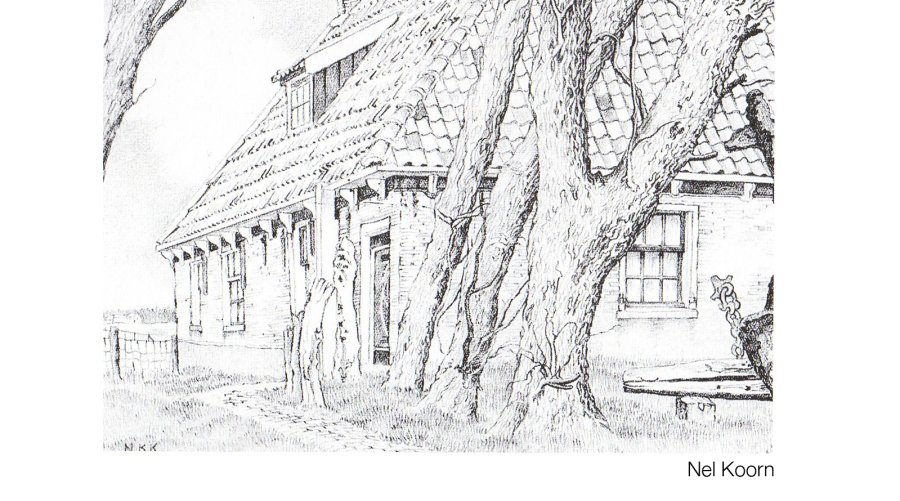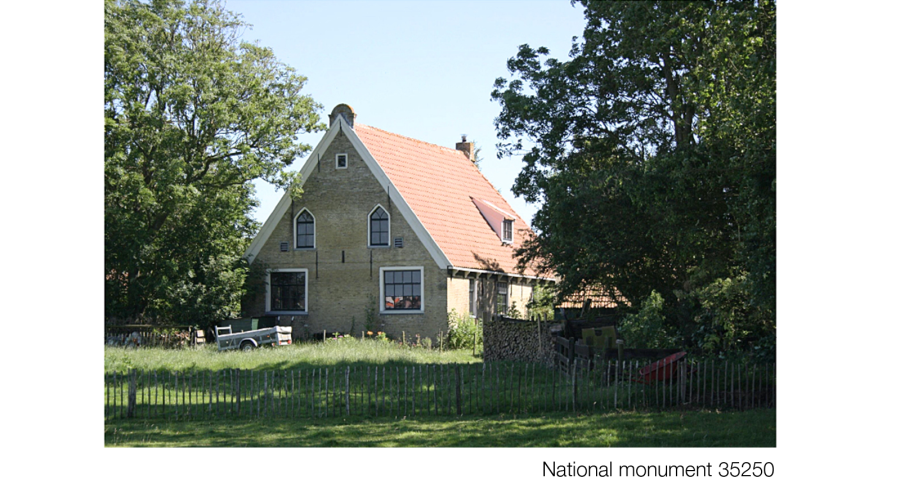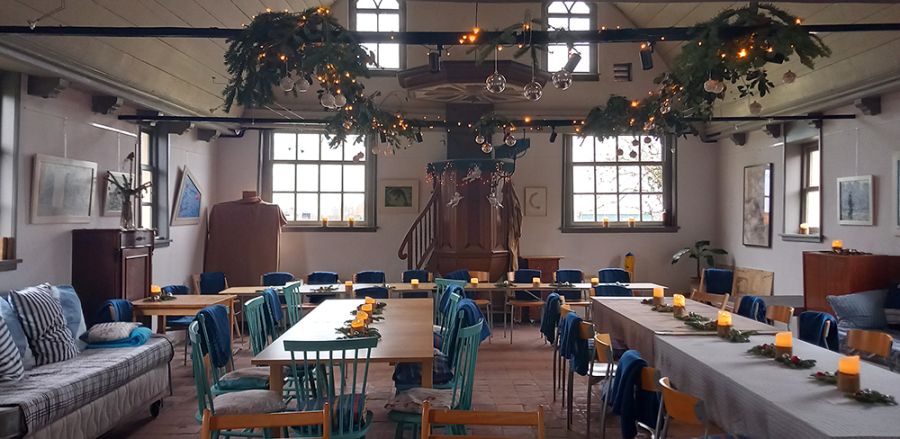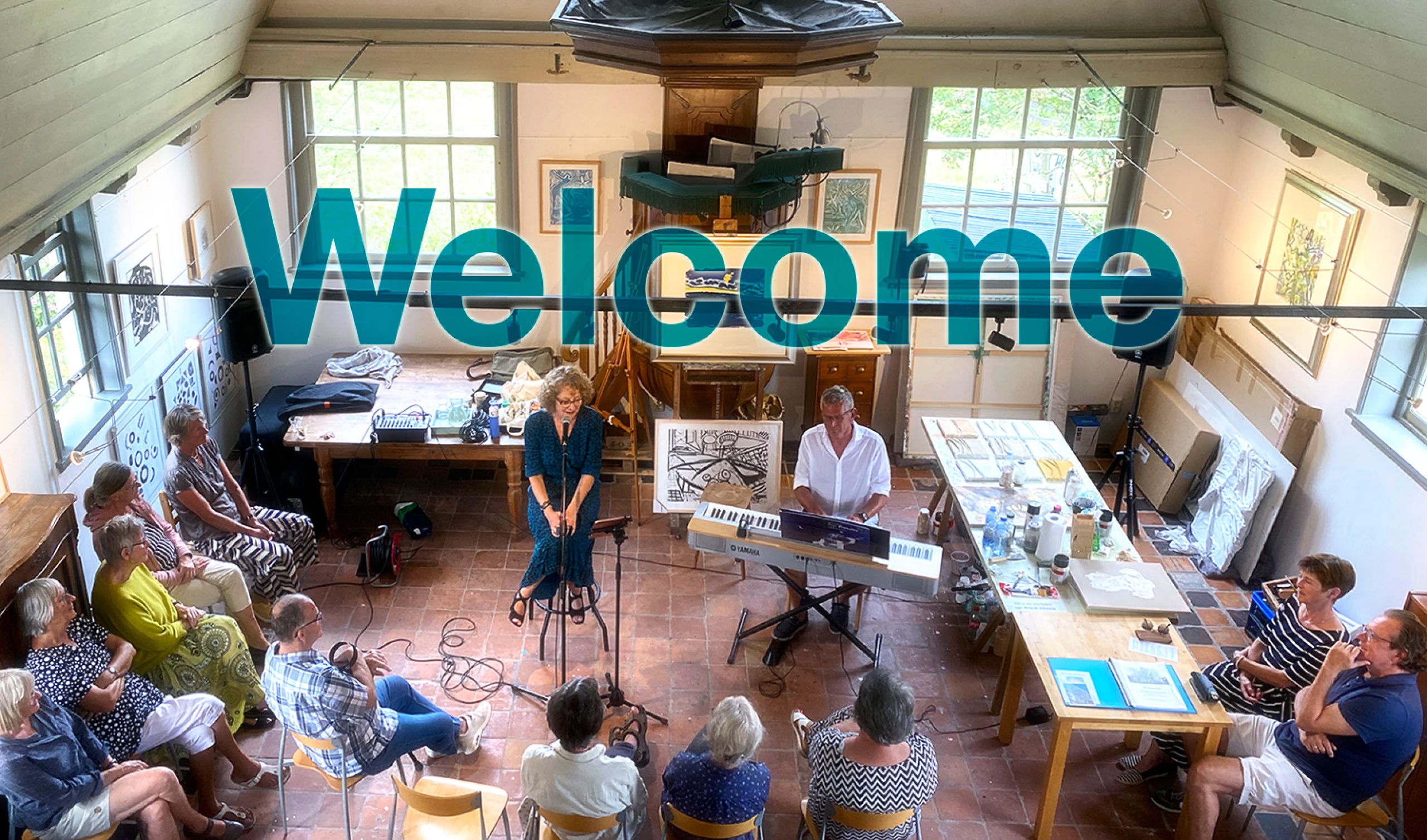
De Vermaning
Shelter for the arts in Den Hoorn on Texel
De Vermaning is hidden behind Diek's houses in a lush garden. As a casual passerby you don't see anything of it. And even if you walk up the garden path, you can hardly see that it is a church. From the outside it looks more like a barn. Your attention is rather drawn to the beautiful garden and the statues of Neptune and Ceres.
Der Garten ist eine wilde Fülle an (einheimischen) Blumen und Pflanzen, vor allem nicht zu sehr geharkt. Nettie van de Brake strebt nach „organisiertem Chaos“. Eine Oase der Ruhe für jeden, der sie nutzen möchte.
The building dates from 1660 and was for centuries the meeting place for the Anabaptists in Den Hoorn. That is why it is also called 'Admonition'; that is simply the name the Anabaptists gave to their churches.
For the last thirty years of his life, De Vermaning was the studio of the painter Henk Noorlander (1948-2020). 'World famous on Texel', as he himself used to say. The church was not just a studio, it was his life: 'The place where I have been happiest'.
Since his death, his widow Nettie van de Brake has continued the studio 'in his spirit'. Other painters now work there, there are still exhibitions to see, and singers and musicians regularly perform. There is also room for workshops, lectures, cabaret and theatre.
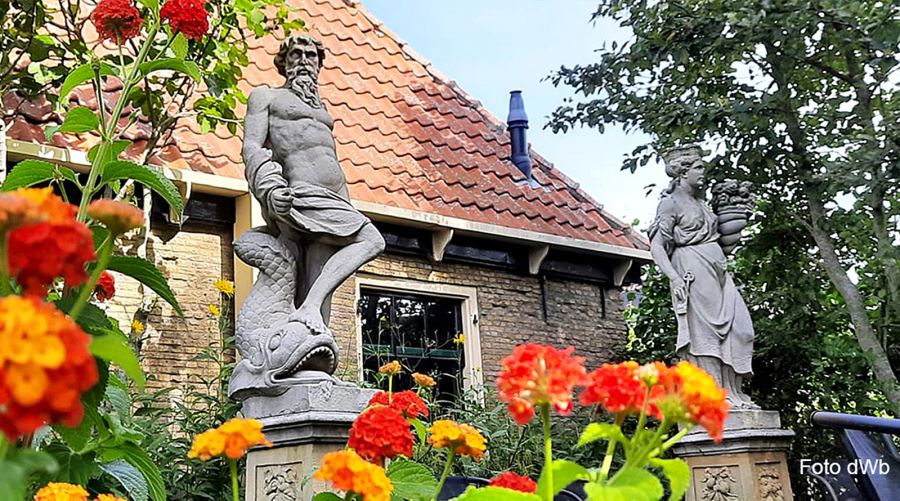
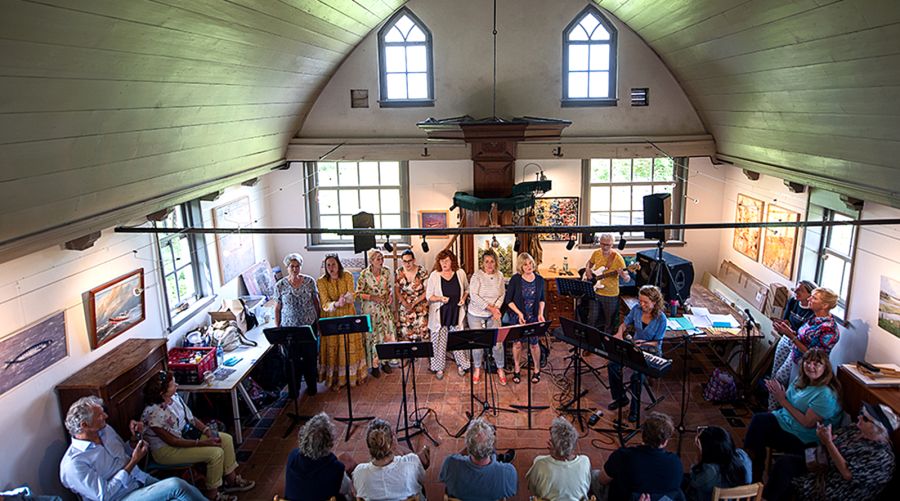
In De Vermaning there is a regular change of various exhibitions with free entrance.
In principle, De Vermaning Open daily from approximately 10 a.m. to 6 p.m. for visitors, 'unless I'm closed'. Sometimes there is a 'private' meeting or the artists who work there need concentration and peace; then the door remains closed.
With great regularity there are music performances in various genres.
There is also a range of workshops, lectures, theatre or otherwise.
Be surprised by the offer
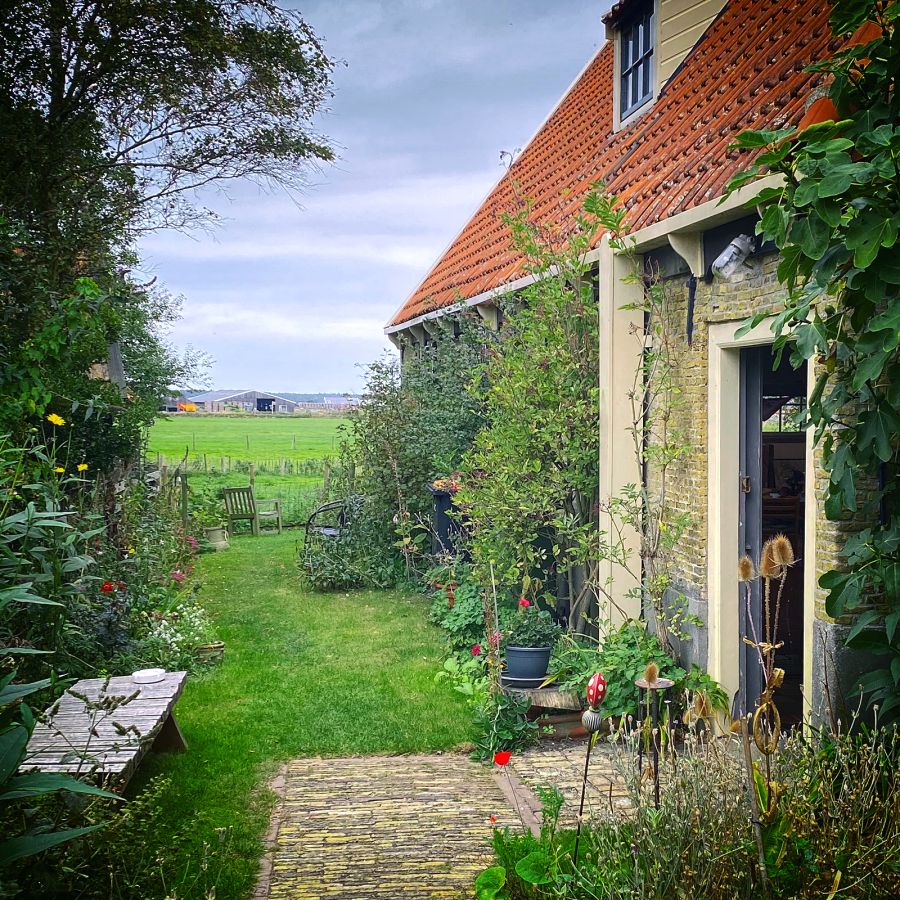
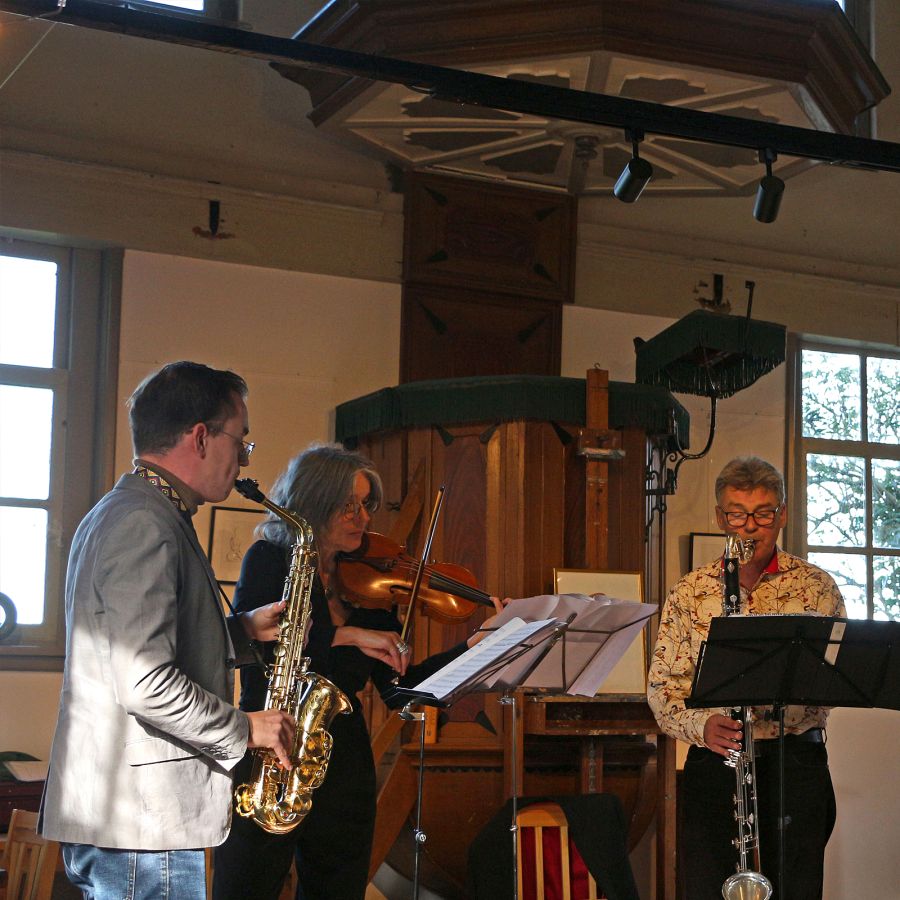
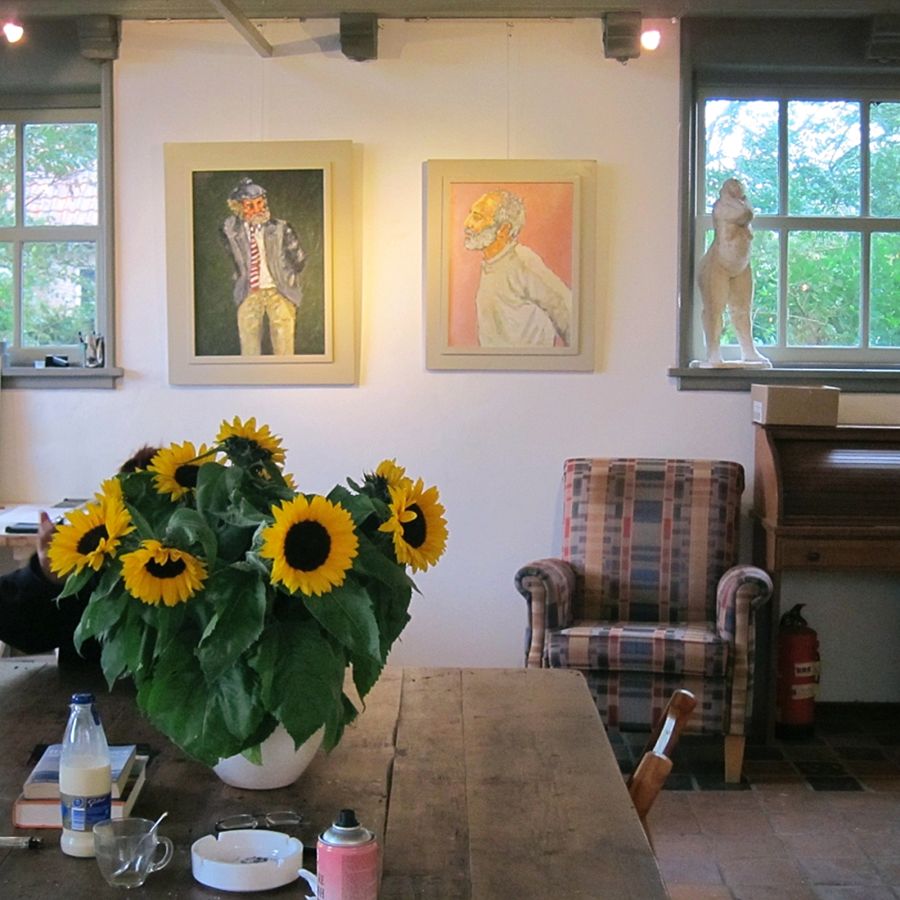
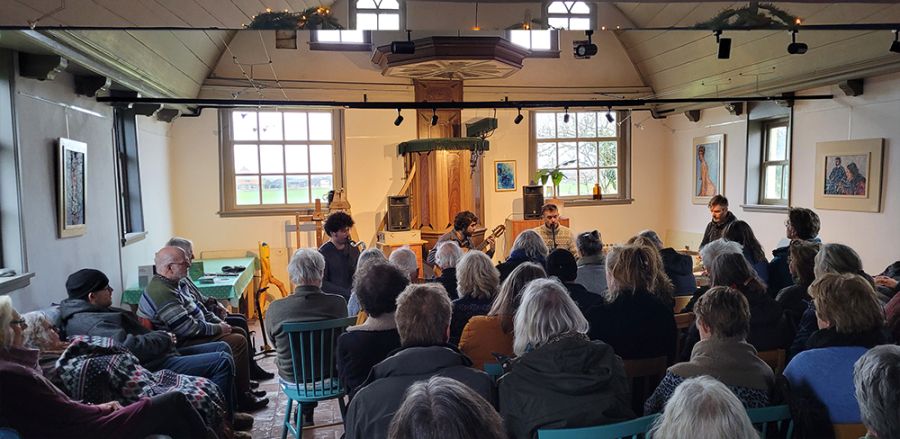
History
De Vermaning since 1660 to the present
The Vermaning was built in 1660 as the preaching house of the 'Waterlanse Menno Gesindheyt'. It is a good example of a simple barn or shelter church, 'hidden' behind the houses; no clock, no tower, no stained glass windows. There was an organ, taken over from the church in De Waal for 500 guilders; later sold to the Wieringermeer.
Originally, women and children sat in the middle on chairs and the men on benches around them. This is for protection in the event of a possible raid. The evening meal took place during distribution.
De Vermaning was renovated in 1771-1772. The pulpit will be moved from the west wall to its current location and lighting will be installed, both inside and outside.
De Vermaning was a testing ground for young 'teachers' in the 18th century. Read about this in the edition compiled by Nettie van de Brake for Den Hoorn celebrates 'Texel 600 years of City', May 30 - June 27, 2015.
From 1976 to 1987, the Maritime Museum was located in the Vermaning.
It emerged in 1976 from a collaboration between the municipality and the Texel Museums Foundation with the aim of housing the Baumann-Verburg painting and print collection. A collection that had been bequeathed to the municipality and for which it was not immediately possible to find a location. De Vermaning was also only able to show part of the collection. Soon after the opening of the Maritime Museum in Oudeschild, there was talk of moving and on May 13, 1987 the museum in the Vermaning closed its doors.
From 1989 to 2020, painter Henk Noorlander had his studio in De Vermaning, a stone's throw from his home. Click here for his story, written by his wife Nettie.
After Henk's death In 2020 to date, De Vermaning is a shelter for the arts under the inspiring wings of Nettie van de Brake, Henk's widow.
